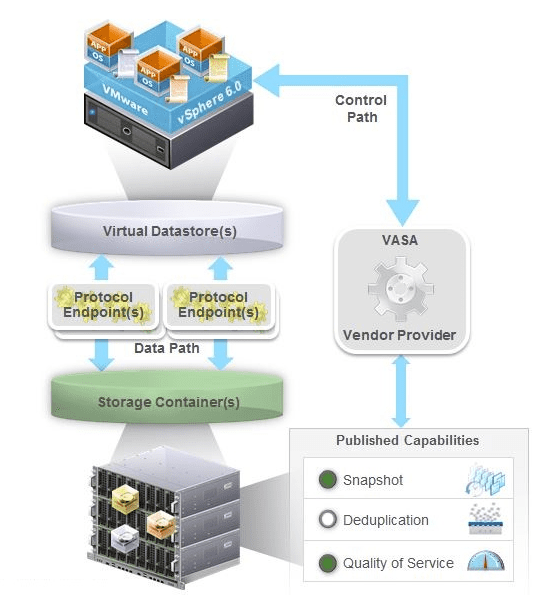
Why are Zerto Customers Using vVols?
A frequently requested enhancement to the Zerto IT Resilience Platform™ has been support for VMware’s Virtual Volumes (vVols). Since the March 2020 release of Zerto 8.0 with support for vVols, we’ve been curious about how our customers use vVols with Zerto.
Why Use vVols?
In vVols, a virtual machine and its disks are managed as a single unit of storage rather than individual storage volumes. Customers can manage this storage with policies by using Storage Policy Based Management in vCenter, while storage array vendors expose their storage services and capabilities through a Protocol Endpoint (PE) and vSphere APIs for Storage Awareness (VASA Provider). The diagram below shows the data and control paths for a storage array and ESXi host, as well as how the array surfaces information such as snapshots, deduplication, and QOS to vSphere.

Image credit: VMware https://kb.vmware.com/s/article/2113013
Why Manage Storage as a Single Unit?
When storage arrays surface services and capabilities to vSphere through the array-specific PEs and VASA Providers, a user can compose policies in vCenter based on the array’s capabilities. These policies are used for initial VM placement on the storage that matches the VM needs. Once the initial VM is placed, it’s possible to see whether the VM’s storage is correct for the VM’s requirements.
If there is a storage maintenance event that prompts a VM to migrate to a different datastore and the VM needs to be run on flash storage because of high IO rates, then the datastores available to that VM must be all flash. Without vVols, a user would have to manually track VMs and datastores to be certain that the datastore capabilities match the VM’s requirements.
Why do Zerto Customers Use vVols?
We asked our customers why they use vVols with Zerto, and they cited the following reasons:
- Better overall storage performance
- Identification of VMs that may be experiencing storage-related issues
- Centralized policy-based management for the entire environment that makes it easier to manage a constantly increasing workload
- Less time needed to create a new VM (because each VM is deployed directly to a vVol)
Conclusion
vVols complements Zerto’s approach of protecting each VM while being agnostic to storage arrays. Zerto customers use vVols on Zerto 8.0 with a variety of storage vendors to manage both storage and protection on each VM.
For more details, read the solution brief: Zerto IT Resilience Platform™ for VMware vSphere Virtual Volumes (vVols).
 Amy Mitchell
Amy Mitchell 

